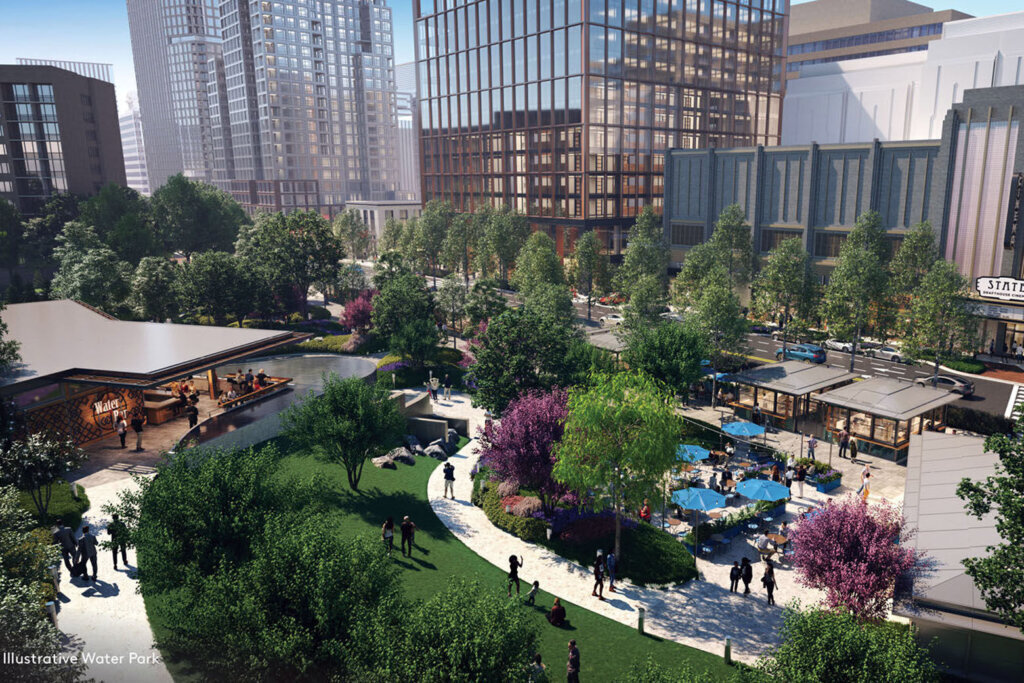National Landing, the name coined in 2018 by economic development officials in Arlington County and Alexandria, Virginia, as part of branding efforts for winning Amazon’s decision to choose the area for its second headquarters, has released a study citing data that shows it is one of the nation’s leading innovation districts.
The National Landing Business Improvement District, which crosses two jurisdictions and includes Crystal City, Pentagon City and Pentagon Row, cites major employers in tech and education, diverse housing, technological infrastructure and more as putting it on the map rivaling areas like Kendall Square in Cambridge or South Lake Union in Seattle.

In addition to Amazon’s HQ2, National Landing is also home to Virginia Tech’s forthcoming $1 billion Innovation Campus.
The National Landing Market Impact Study, compiled for the BID by HR&A Advisors, calls National Landing an emerging mixed-use downtown with more jobs and residents per square mile than its regional competitors.
Within the next decade, the report predicts National Landing will become the D.C. region’s fastest growing neighborhood.
“We have $12 billion in public and private investment that is fueling an unprecedented transformation in the National Landing area, both in terms of housing and office development. In a combined sense, we will be surpassing Navy Yard and Capitol Riverfront in terms of being the fastest growing District,” said Tracy Gabriel, president and executive director of the National Landing Business Improvement District.
Capitol Riverfront has held the title of fastest-growing district for the past 10 years.
Per the report:
- There is currently 8 million square feet of Class A office space in development in National Landing, as well as a significant supply of more affordable Class B and Class C office space well-suited for smaller startup companies.
- National Landing has a 1 for 1 ratio of daytime workers to residents, and 47% of existing building infrastructure is residential.
- Developer JBG Smith’s partnership with AT&T will make National Landing the first 5G-enabled “connected city” at scale.
JBG Smith is the largest commercial property owner in the National Landing area. It owns the existing office buildings Amazon has leased in Crystal City for its first HQ2 operations, and it is developing Amazon’s two other HQ2 campuses nearby.
Amazon has pledged to create 25,000 jobs in National Landing by 2030, equal to total job growth in downtown D.C. between 2010 and 2020.
National Landing will need housing to accommodate Amazon and Virginia Tech employees who choose to live in the area. There are more than 16,000 apartments and condos in the area now, with another 8,000 residential units currently in development.
National Landing now has close to 3 million square feet of retail, and hotels with close to 5,500 rooms.
A balance of offices and residents living in the same area is part of what creates innovation centers.
“We have that great mix of what you want. We will continue to see that balance of jobs to housing, which is what’s important to having a vibrant and dynamic district. Having people both live and work in the area,” Gabriel said.
Among new neighborhood additions that recently got underway are two mixed-used outdoor parks in Crystal City: Water Park, which will have restaurant kiosks and a performance stage, and Dining in the Park, with a restaurant surrounded by an outdoor park.
The area is also highly educated, with 83% of residents holding a Bachelor’s degree or higher, compared to 58% of residents inside the Beltway overall.
The name National Landing is a nod to the nation’s Capitol, and Ronald Reagan Washington National Airport, which runs the length of the neighborhood.
The National Landing BID’s full Market Impact Study is posted online.








